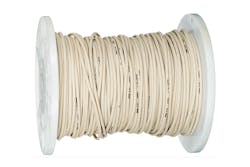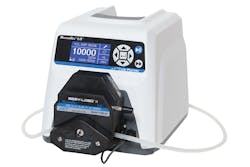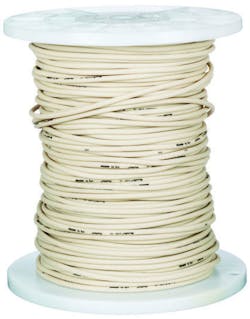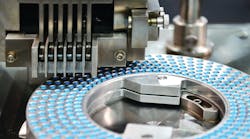The recent global constraint of siloxane — a key ingredient in silicone — has caused extended lead times and increased pricing, creating headaches in supply chains across the market that are sourcing this material. Unfortunately, the constraint may continue for many months; one major source of silicone tubing is projecting another 12 months of restricted flow of siloxane.
Over the past few decades, silicone’s dominance in the medical and pharmaceutical marketplace has expanded, and various competitive elastic materials have been developed to grab some market share. The associated benefits are as numerous as the formulations available: reduced costs, longer pumping life (for those formulations designed to work in peristaltic pumps), expanded chemical and temperature compatibility, decreased gas permeability and higher purity, to name a few. To quickly navigate this sea of available silicone alternatives, first determine the critical process parameters and the reason silicone was chosen, and then choose a source that can complete the fluid path for the need.
Overview of the siloxane constraint
Naturally, the demand for silicone products will increase alongside the gains in the global economy, which have been robust. However, pharmaceutical, medical and construction industries have recently been expanding faster than the rate of the economy, leading to a spike in demand. This new demand is reflected in the facilities popping up in growth markets such as those in the Asia-Pacific region.
In addition to the new demand increase, supply constraints have been introduced. Normally, if one region’s capacity was tight or experiencing issues with the flow of components or ingredients needed for production, the solution would be to explore other regions for excess capacity.Choosing an alternative pharmaceutical tubing formulation
Internal considerations
Primarily, chemical compatibility needs to be considered between the process media and the tube material. Make sure to consider every component of the fluid, especially if it is in contact with the tubing for a long time. A quick search on the internet for chemical compatibility charts of elastic materials will yield many results. Pick a few that fit the process and average their data. Most should agree with one another.
If the fluid cannot be found or the process does not fit the test parameters (most charts assume room temperature), there are other options. Some tubing suppliers offer a tubing chemical compatibility kit or samples of their formulations. This ensures the customer’s formulation of choice is compatible with the process. Cole-Parmer’s tubing kit recommends an immersion test where the sample tube’s dimensions and weight are recorded before immersion into the process media. The time for the sample immersion should be 48 hours to determine any potential long-term effects the process media may have on the formulation. Once the period passes, the tubing is removed from the fluid. Then it is weighed and weighed again, noting any physical changes to the tubing such as cracking, scarring, brittleness or softening. These indicate that the media damaged the tubing and would not be recommended. Work with quality control teams to determine a suitable change tolerance.
System temperature and pressure should be reviewed next. Some formulations handle pressure better than others. Some are supported by infrastructure internal to the tubing such as braiding or mandrel wrapping. The braiding is inside the tube wall, and mandrel wrapping is external, so they do not contact the process fluid. Wrapping and exterior stainless steel braiding typically offers a higher-pressure maximum than braided tubing. Alternatively, choosing a more rigid tubing formulation, such as PTFE or polypropylene, performs better than flexible tubing such as silicone at high system pressures. In addition to pressure, minimum and maximum temperatures for system and ambient to the tubing should be measured. Flexible tubing unsuitable for lower temperatures becomes brittle, which may rupture or encourage spallation — the fragmentation of particulates from the inner surface of the tubing wall. At higher temperatures, the pressure capacity of the tubing decreases, which can also lead to burst lines, resulting in a potential safety hazard. Ideally, one will find a tubing formulation with a working temperature range where process temperature is close to the midpoint.
Purity of the formulation is also important to consider, especially in downstream pharmaceutical and medical applications. There are many testing agencies that provide standards for purity and safety such as the U.S. Food & Drug Administration (FDA), the United States Pharmacopeia (USP), Registration, Evaluation, Authorization, and Restriction of Chemicals (REACH) and Restriction of Hazardous Substances (RoHS). Both REACH and RoHS have lists of chemicals determined to be harmful to human health or the environment by the European Union. These chemicals include lead, mercury and phthalate plasticizers such as DEHP. Both regulations come under review and receive updates on occasion. If biocompatibility is a concern, look for formulations certified as USP plastic class VI or simply USPVI. This classification outlines the parameters and guidelines for three main tests: systemic injection, intracutaneous injection and implantation. The first two inject a range of different biocompatible fluids such as saline and the latter simply being implanted into muscle. FDA 21 CFR is another that sets guidelines for the testing of materials intended for human end use.
Most suppliers of high-grade tubing will supply a certificate of compliance (CoC) that lists the various regulatory approvals that the material meets. The certificate can even offer additional testing information as well. However, the latter testing information is usually gated content and is part of a more detailed validation packet.
External considerations and partnering with a supplier
External effects on the tubing are often overlooked compared to internal effects, but they are still pertinent. Silicone is moldable, so it is common that joints and flow intersections are molded together. However, not all flexible rubbers have this capability. Unfortunately, there is no rule of thumb whether one elastomer is weldable or not. The best solution is to partner with suppliers and inquire what tubing they can offer that is weldable. This is also true for sterilization techniques. Silicone can withstand the most common sterilization techniques such as autoclave and gamma irradiation for some formulations. However, this is not the case for all alternative formulations.
Overall, to ensure that the correct alternative tubing is obtained, it is key to partner with a competent and resourceful tubing supplier on a solution. A supplier should review the complete fluid path and develop a plan to help ensure a continuous flow of necessary components to meet production timelines. By working through STAMP (size, temperature, application, media and pressure) of finding formulations and components that meet process needs, the supplier should also work on the necessary regulatory approval documentation, stocking and application support and do so from a global perspective, that is, find stocking locations around the globe. Let them help to confirm purity and compliance to regulations required by the process.
How does one trust the recommendations or information from a supplier? The supplier should have comprehensive traceability and purity documentation of its formulations such as a certificate of compliance and validation guides; specific test data is also usually available upon request. Additionally, they should have quality trained support staff available to assist with any questions one may have regarding their products.
Be flexible, like silicone rubber
The siloxane supply constraint is not expected to be resolved until after 2019, so it would be wise for customers of silicone tubing to consider validating alternative formulations to ensure continuity of product in their supply chain. This is not new information. Preparation and flexibility have always been good practices to follow, whether there is a supply shortage or not. Making sure the process has some flexibility in its critical parameters mitigates unpredictability in supply forecasts, and having some safety stock ensures no downtime if a shortage occurs. Any supplier of quality tubing should collaborate on a process to help keep a business moving forward.
Eric Rentsch is the product marketing manager for the fluid handling business unit at Cole-Parmer. He is responsible for Masterflex, MasterflexLive and Ismatec brand marketing initiatives including new product launches. Prior to this role, Rentsch was a technical expert at Cole-Parmer where he assisted customers with product selection, education and troubleshooting. He can be reached at [email protected].







